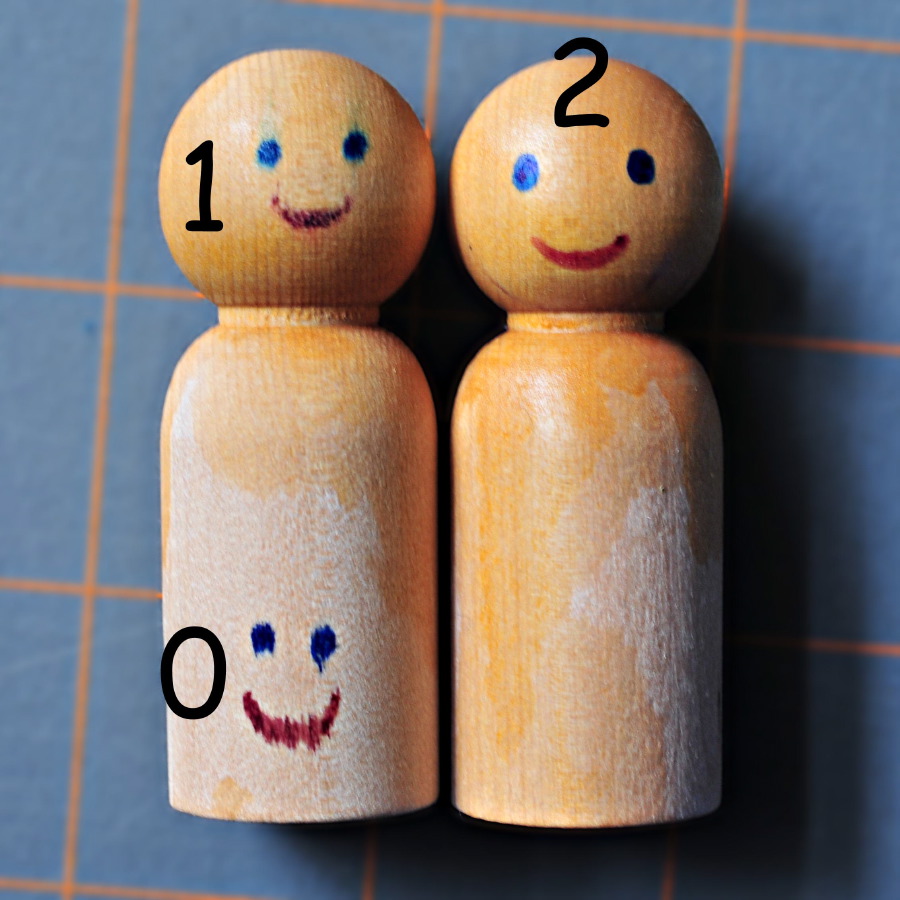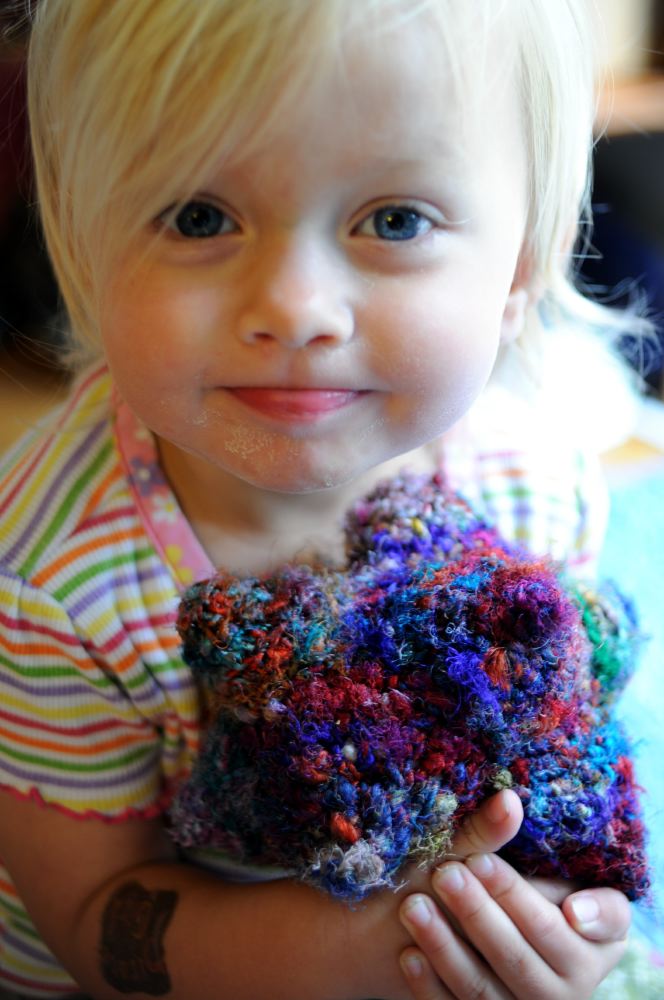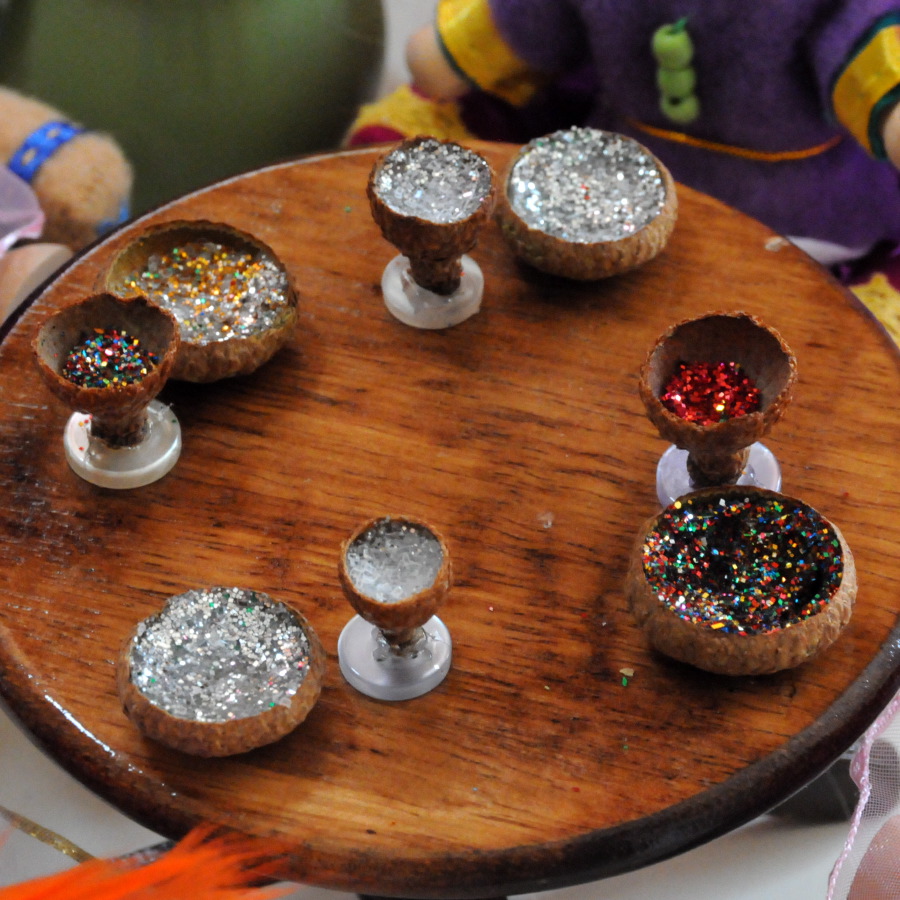Shellac. I love shellac. It is non-toxic, and it isn’t made out of plastic. What is shellac?
Shellac is a resin secreted by the female lac bug, on trees in the forests of India and Thailand. It is processed and sold as dry flakes (pictured at right), which are dissolved in denatured alcohol to make liquid shellac, which is used as a brush-on colorant, food glaze and wood finish. Shellac functions as a tough all-natural primer, sanding sealant, tannin-blocker, odour-blocker, stain, and high-gloss varnish.
Yes, foodglaze. You’ve probably eaten shellac, and if you are not a compulsive ingredients reader you probably never realized it. Ever had sprinkles on your ice cream? Yep.
So, hey, it’s an approved food ingredient, I’m okay with using it to finish toys that my
1yo will probably be chewing on when I’m not looking. Awesome!
When I was making some rainbow gnomes for Penelope I was experimenting with shellac so that I could give them faces with sharpie markers. Which are full of horrible solvents. I ended up leaving them classically faceless just because I liked them that way. But anyway the numbers on that picture up there are the number of coats of shellac that I put on the peg people before drawing each face.
No shellac – bleeding marker.
1 coat of shellac – not so much bleeding as gentle blurry haloing, probably as the alcohols in the sharpie diffused through the thin coat of shellac.
2 coats of shellac – hurray! No bleeding!
Right, dissolves in alcohol, so don’t go letting your toddler drop their toys in your drink.






10 Comments
Add Yours →I love the stuff I learn on your blog! Do you have anything against Mod Podge? I think it could have a similar effect and it’s non-toxic. Just wondering because I actually have some of that on hand…
Er, um, well, heh. As far as I know, all white glues (Mod Podge, Elmers, Tacky Glue, whatever) contain phthalates. It’s what keeps the glue from getting brittle when it is dry, phthalates are plasticizers. Which as far as I’m concerned means you shouldn’t coat baby toys in them. Non-toxic is a funny thing, all it really means legally (including ASTM-4236) means is that if you use the product according to the directions (which usually does NOT include eating it) then it probably won’t do you any lasting harm.
I never would have guessed any of those shellac facts! I can’t believe it’s made by a bug and used in food. Thanks for the insight. : )
You’re welcome! I think shellac is fascinating stuff.
Never bough shellac before…is it all the same? what kind should I be buying for this application?
Thanks
If you are making toys for babies that will chew on them, I would search for food-safe shellac. It is sold for cutting boards and wooden bowls. I’m sorry but I don’t have a specific one I can recommend, I was using whatever my husband had in his work shop, and that was years ago. Good luck!
If you are making toys for babies that will chew on them, I would search for food-safe shellac. It is sold for cutting boards and wooden bowls. I’m sorry but I don’t have a specific one I can recommend, I was using whatever my husband had in his work shop, and that was years ago. Good luck!
Shellac is kind of weird. I’m sure it’s completely harmless to us, but still strange to think that we use coloring that comes from a type of bug.
Question…….do you shellac the piece before, or after, using the markers?
Hello,
I would like to know if I draw in a wood with indian ink and after pass several coats of shelac, if the shelac will blur the drawing.